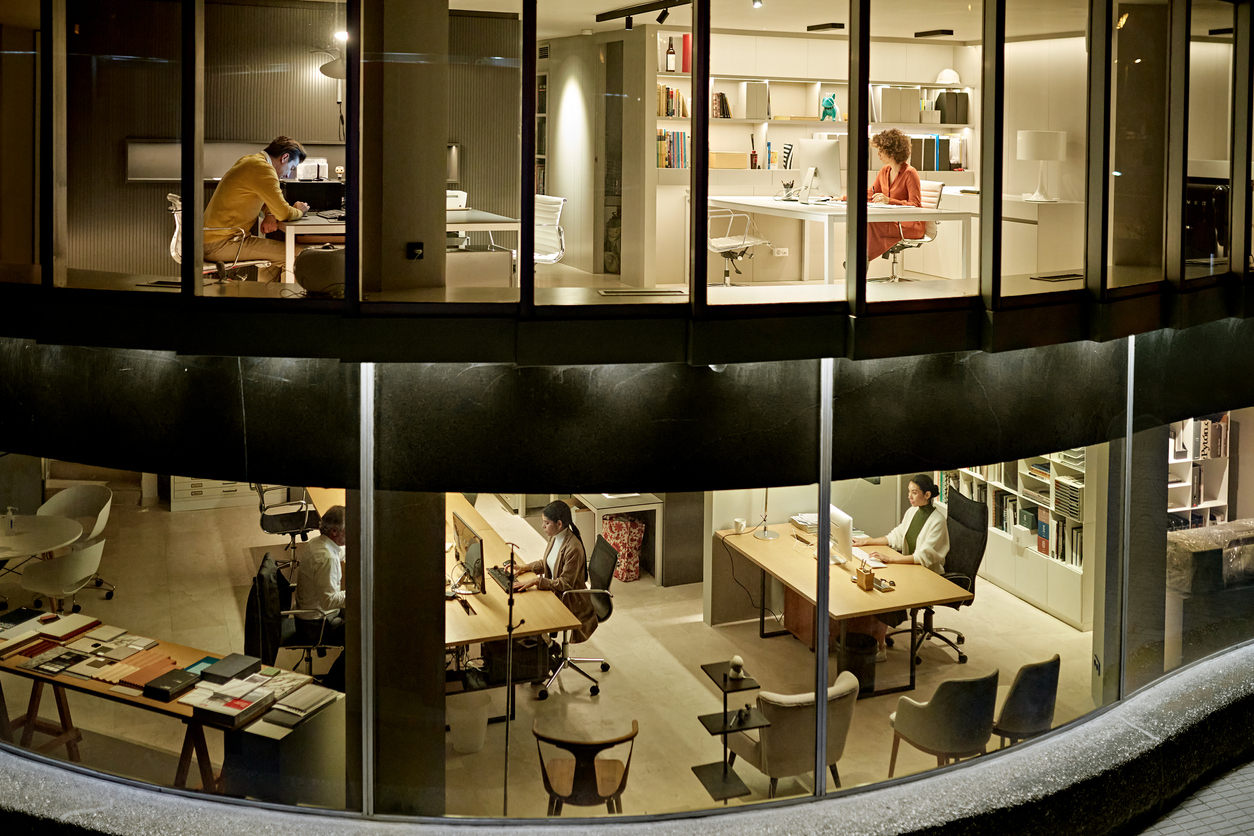CentralReach's office deal is the latest indication that even companies that embrace remote and hybrid work may still want new work spaces, betting that regular office use will benefit employee collaboration.
In September, the company will relocate to the Bell Works development in Holmdel, New Jersey. CentralReach will occupy 25,000 square feet of office space, the company's largest office footprint to date. Its current headquarters are in nearby Matawan, New Jersey, in an aging building that has sat mostly empty during the pandemic.
According to Chief Executive Chris Sullens, CentralReach's modern headquarters is a way to entice employees back to the office without having to force them. A communal kitchen will include an island with bar stools, and collaborative work areas will include couches and armchairs. There will be fewer assigned desks and more whiteboards and wheeled furniture.
"I want people to use the office, but I want them to use it in a way that makes sense, so they're not wasting time commuting when they don't have to," Mr. Sullens explained.
CentralReach's new location is good news for office-building owners who were concerned that the rise of remote work would lead to some companies cutting costs by dumping most or all work space. Many businesses are discovering that a mix is preferable.
However, CentralReach's new headquarters foreshadows additional challenges for property owners. Companies are generally avoiding older buildings and require less space overall. Despite the fact that CentralReach's new office will be larger than the one it is leaving, the company is hiring more employees and expects to have less space per employee in the end.
Companies claim that a hybrid approach allows them to have a smaller office footprint. CentralReach would have leased two to three times as much space if all employees worked five days a week, according to Mr. Sullens. On a typical day, he expects only about a quarter of the company's local workforce to be in the office.
According to Ralph Zucker, CEO of Bell Works developer Somerset Development, many of the businesses relocating to the complex are downsizing from larger spaces. According to him, one new tenant is leaving behind a 350,000-square-foot office to move into 27,000 square feet at Bell Works.
This consolidation is contributing to higher vacancy rates. According to Cushman & Wakefield PLC, approximately 17.5 percent of U.S. office space was unleased or available for sublease at the end of June, up from 13.2 percent five years ago.
Cisco Systems Inc.'s Jeremy Witikko, global director of smart buildings, said he has about three conversations a day with companies looking to reduce their office space. Cisco, which has embraced hybrid work, has stated that it plans to reduce its office space by approximately 30%.
Rather than sitting at their desks all day, Cisco employees in Manhattan are expected to move around between lounges, meeting rooms, and quiet rooms depending on the type of work they do, according to Bob Cicero, Cisco's smart-buildings leader for the Americas.
The goal is to make the office more inviting, collaborative, and modern, giving employees a reason to come in. "We fundamentally believe the office needs to earn our employees' commute," Mr. Cicero said.
Mr. Sullens compared the postpandemic office to a university campus, where students rarely work in one place and instead divide their time between dorm rooms, libraries, classrooms, and lecture halls.
CentralReach's relocation to the Bell Works building, which dates from the early 1960s but was redeveloped in the last decade, comes with a slew of modern conveniences.
The 2-million-square-foot complex, which served as the set for the hit Apple TV+ series "Severance," features shops, restaurants, a Montessori school, a plastic surgery center, a hair salon, indoor golf, and an indoor basketball court.













